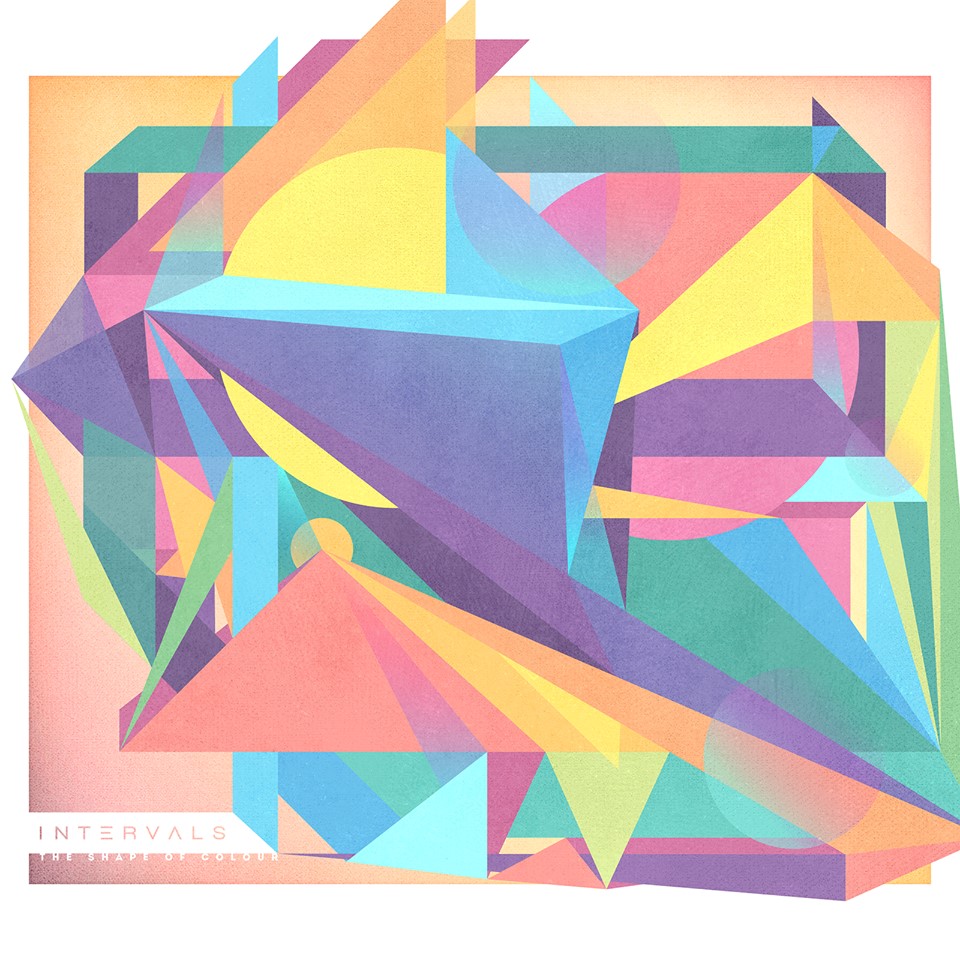
Intervals are a progressive metal outfit from Canada. Following the recent departures of drummer Anup Sustry and guitarist Lukas Guyader, the only official member is Aaron Marshall. Marshall was the founding member of Intervals, and had previously masterminded their work, but still the direction that the new material would take with its solo member was in question.
Intervals have previously released two instrumental EPs, The Space Between (2011) and In Time (2012), before releasing their debut album A Voice Within (2014). This debut album, however, was not instrumental like the EPs before it, with the recruitment of a singer. Although I still enjoyed it, I didn’t get the same pleasure as I did from the instrumental work. I love the way Marshall’s guitar-work simulates the vocalist and can bring so much more to the party harmonically to create that signature Intervals sound.
The new album, The Shape Of Colour, came out on December 4, and much to my enjoyment, is entirely instrumental, drawing comparisons back to my favourite Intervals EP – In Time. Aaron Marshall teams up with featuring artists Leland Whitty, Nick Johnston and Plini, as he shows us around his fretboard one track at a time.
“I’m Awake” is the first track on The Shape Of Colour and was also the first single to be released from the album. It enters with a solo guitar playing a frantic riff, which will be repeated throughout. The riff is built up of semi-quavers, with palm mutes filling the space in between notes, however a gap in the rhythm comes with the use of harmonics which makes for a very effective timbral change. This riff is then repeated as drums and bass fill the mix, as well as another guitar playing a counter melody layered over the top. This counter melody then drifts us seamlessly into a more relaxed section.
The rhythm of this second section goes into half-time, and Marshall begins riffing, with drums and bass accenting various runs and licks that stick out. It then begins to pick up again, before returning to the frantic opening riff with a quick left to right pan of the first run. We then change meter to 6/4, a refreshing change that still allows you to continue the customary head bob! This section focuses more on chordal work rather than phrasing, similar to a breakdown section in metal music. The track then relaxes once more as Marshall again begins another journey his guitar. It builds gradually before finishing on a climactic reprise of the opening riff or chorus riff as we’ve come to know it.
I really enjoyed “I’m Awake”, it’s a great opener to the album and hints at what’s to come. If I were to have one small, tiny, minuscule complaint though, it would be that I would prefer a bit less palm mutes but everything else is fantastic. The use of texture is great, you never get the feeling that it’s being layered too thinly or too heavily, with the instrumentation kept nice and simple throughout but used well. The drums are constantly at the forefront of changing the feel of the track, never settling into a monotonous beat, accentuating phrases and plugging empty space with short and tidy fills.
“Fable” was the second single to be released from the album. Aaron Marshall riffs over a 5/4 groove, with featured saxophonist Leland Whitty taking a solo in an ambient interlude. Read our extensive review of “Fable” here from last month. Along side “I’m Awake” and “Fable”, The Shape Of Colour also boasts other stellar offerings from Marshall including “Sure Shot”, “Sweet Tooth” and “Slight Of Hand” among others.
The final track on the album is called “Libra”, and features the talented guitarist Plini. This track is a dream come true for any huge fans of progressive metal instrumental music such as myself, as two heavyweights of the genre join forces to create a riff-monster that you’ll be humming for the rest of the day.
A drum fill and a couple of palm mutes bring you into a heavy, chugging opening, similar to one you would find on Interval’s In Time EP. However, after a short phrase which we will come to know as a chorus riff, we enter a familiar ambient verse (similar to the structure’s of “I’m Awake” and “Fable”) over which Marshall once again leads us around his guitar neck. The bass riff before this verse begins is worth mentioning too – a muted slap riff that will melt your face off!
The harsh sound of picking and palm mutes are balanced by smooth hammer-ons, a balance that is sustained well so that we aren’t over-awed by either technique. – this is particularly satisfying after my slight concern over the extensive use of palm mutes in “I’m Awake”! After that we return to the chorus riff, followed by another verse, then we move on to the solo section. You could argue that this kind of music is a constant solo throughout a track, but you will definitely notice the difference here.
Plini’s solo is incredible. I’ve come to expect nothing less form the 23 year-old magician. Soloing is all about variety – varied rhythm, varied licks, varied techniques, varied dynamic range – and Plini varies his solo so well. We hear shredding, we hear the high and low registers and he keeps you locked in throughout. “Libra” has to be my favourite track on the album. It has heavy moments, it has ambient moments, it has chordal sections, it has riffing sections, it has a solo section and it takes you on a journey that you don’t want to end.
I thoroughly enjoyed The Shape Of Colour. I was apprehensive before its release because I wanted to like it so badly, but I need not have worried. Each track, although structurally very similar, brings with it a new feel and new groove to get involved with. Marshall really knows his way around his instrument and has once again proved his compositional talents.
There is so much depth in each track, the texture is never layered on too thick and you always feel like there is space. Even on heavier tracks such as “Libra”, it always feels vibrant and bright, never feeling muddy, a comparison with all of the light, bright colours on the album artwork.
I would recommend The Shape Of Colour to anyone looking at exploring a new genre, or just wanting some music to jam to. No vocals gives you so much more compositional freedom, without the restraint of the range of a lead singer. Instrumental music isn’t to everyone’s taste, I understand that, but when it’s done well (like it is here), you have no choice but to get immersed in it! Purchase Intervals’ The Shape Of Colour on iTunes here.
Words by William Kitchener





